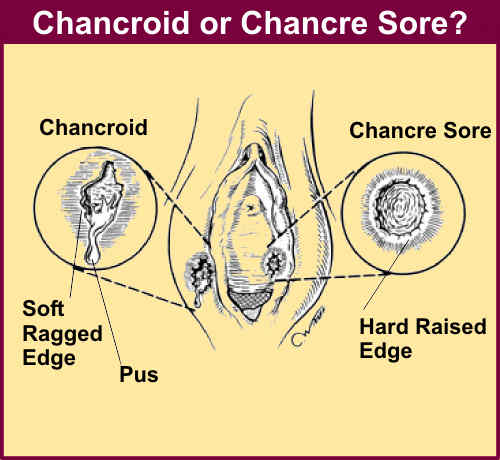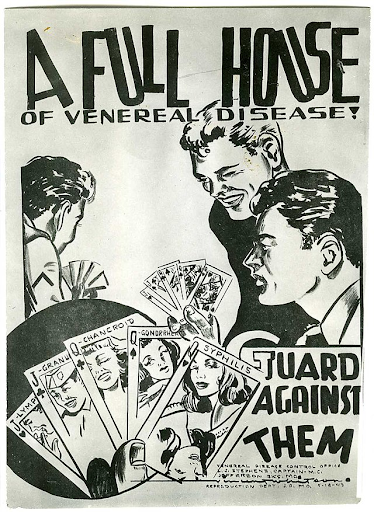Chancre On My Genitals! : Syphilis versus Chancroid
|
Genito-ulcerative diseases are a subsection of STDs, with characteristic and visible lesions that anyone can notice. An example of such a lesion is a “chancre”, appearing in Syphilis and Chancroid as “hard” and “soft” chancres respectively. So, if you’ve noticed a lesion on your penis, labia, rectum, or mouth lately, grab your mirror! Let’s get investigating. What Is A Chancre?!A chancre is a sore or lesion at the site of initial infection in certain sexually transmitted diseases. A “Hard” Chancre is firm with raised edges and covered by pus rich in bacteria. It is painless and most often seen in the early stage of Syphilis, also known as “Primary Syphilis”. Detection at this phase can lead to quick treatment. A “Soft” Chancre has soft, ragged edges, filled with pus that can ooze out when pressure is applied. It is also prone to bleeding and is painful. This type of Chancre is most often observed in Chancroid. |

Syphilis: The Great Pretender
Nearly 11 million cases of syphilis pop up around the globe per year, mostly in regions such as Africa, South America, and Southeast Asia. It is caused by the bacterium Treponema pallidum and the chances, as mentioned earlier, are often painless and single. They take around 9-90 days to incubate and make their appearance. During the first stages of the disease, chancres are present on the genitals, rectum or mouth. After these heal up, rashes and lesions appear in the same areas. Other symptoms include fever, swollen lymph nodes, sore throat, hair loss, weight loss, muscle aches and fatigue. If left undetected, Syphilis can progress into worse stages, affecting more parts of the body. Due to its largely asymptomatic nature, it is known as “The Great Pretender”
Chancroid: Advocate Of HIV
Although not as prevalent as Syphilis, Chancroid is still a problem in developing countries. It is caused by the bacterium Haemophilus ducreyi and the ulcers are often painful and multiple, rich in pus with a tendency to bleed. They have a shorter incubation period in comparison to syphilis, of 1-14 days. Additional symptoms include pain during sex, swelling in the groin, and swollen or abscessed lymph nodes.
Both Chancroids and syphilis increase susceptibility to HIV infection, thus it’s important to get yourself tested regularly if you’re sexually active.

Testing & Diagnosis
Syphilis is easily diagnosable during the early stages of infection. The testing is a two-step process. The tests used to identify the antibodies of Syphilis are the Rapid Plasma Reagin (RPR), the Venereal Disease Research Laboratory (VDRL) test, the Enzyme-Linked Immunosorbent Assay (ELISA), and several others. These are conducted by drawing blood or cerebrospinal fluid.
On the other hand, it is difficult to diagnose Chancroid, as the culture is not readily available. Thus, it is usually detected by a process of elimination, by ruling out the presence of Syphilis, Herpes and Lymphogranuloma Venereum.
Conclusion
In conclusion, important information on the nature of STDs should be more commonplace and openly discussed so that people can proactively seek treatment. If you encounter any such lesions or sores in your private areas, please get yourself immediately tested!
Written by Supriti Gopalkrishnan & Nirupama Menon
Author

